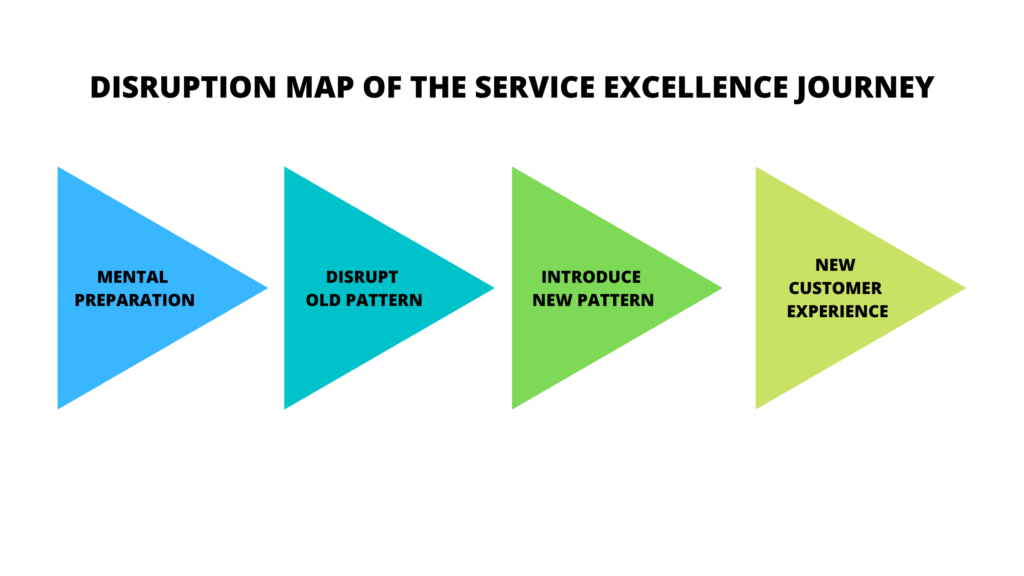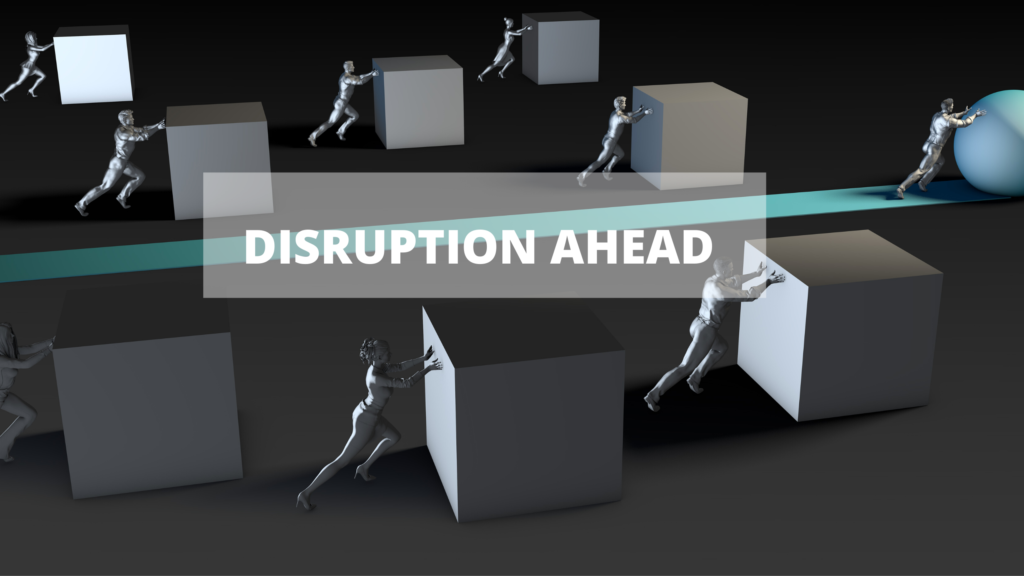Being nice to the customer is a concept that many businesses don’t seem to be able to grasp. It’s usually a hit or miss situation. Some businesses, like the powerhouse Amazon, get it, whilst others and feel free to insert your choice of names here, continue to flounder.
For a start up business, the key to achieving service excellence is controlling the build out strategy, whilst for an existing business it’s managing the disruption (the interruption of normative business operations to make way for something different), that will be caused by shifting the customer experience management gears.
Getting service excellence right is a bit like losing weight. Have you ever tried to lose weight? If your answer is yes, then you may have experienced the highs and lows of the weight loss journey. Some days are filled with rejoicing when healthy eating and exercise fall into place seamlessly, other days are just not award winning days (read as fried foods, high carbs and sugary snacks).
The key to sustained weight loss, like every goal that is to be attained, is first the mental preparation for change and then managing the painful journey that comes with disrupting an existing pattern and replacing it with one that is new and more desirable.
The weight loss journey and the service excellence journey share the same disruption map. Focus on the mental preparation for change, manage the pain of disruption and introduce the new and desirable pattern, all the while keeping the ultimate goal of what success looks like, in view.

Let me say here that very often, it’s infinitely less painful when a business decides to disrupt itself. It allows for preparation and strategy management. More importantly, it allows for a greater measure of control over the journey.
Disrupting your existing business to make way for service excellence will involve several steps. Preparedness for change, overhauling of systems and processes, reassembling of resources to accommodate a service welcoming framework, re-imagining of the new vision for customer experience, re-engineering of the service delivery framework, sustainability of the new order and finally, a plan for continuous improvement.
CRITICAL ELEMENTS OF THE SERVICE EXCELLENCE JOURNEY
But first, the business has to take a major step that will clear the way for stakeholder buy-in to the disruption. The leadership team and in particular, the CEO, MD, business owner etc., has to step away from the limelight and allow the customer to occupy that spot. What do I mean by this? Simply that ego, vanity, self aggrandizement and spotlight addiction need to be purged from the leadership mix if an authentic program of customer engagement is to be accepted by all and sundry.
Ego, vanity, self aggrandizement and spotlight addiction need to be purged from the leadership mix if an authentic program of customer engagement is to be accepted by all and sundry.
Secondly, it would be a good idea to develop an appetite for failure. As Winston Churchill once said; “success is the ability to fail over and over and not lose enthusiasm.” Existing businesses that have to disrupt the old status quo hardly get it right during the first round of disruption. Why? it’s hard to predict how the change strategy will land and so, the process becomes more of a win, lose and learn rather than a slam dunk deal. On the road to getting it right, there will be mistakes, missteps and miscalculations. The important intent is progressing the journey, through the minefields, to finally arrive triumphantly, at the destination.
We can’t forget the need to resist holding the business to a rigid transformation timeline. Impatience has to be tempered with the “as is” state of the business and understanding where its journey to excellence starts, the level of existing malfunction, the level of comfort with inefficiency and the speed of evolution that is rooted in the DNA of the business. Some businesses are slow moving behemoths, whilst others are agile panthers. It’s important to know your business DNA. In a previous column, I spoke about the need to start the journey with a service audit. Well, that’s not the only audit that should be conducted. Additional audits should include those that yield a picture of the efficiency level of the business, as well as the level of adaptability to change.
Existing businesses that have to disrupt the old status quo hardly get it right during the first round of disruption. Why? it’s hard to predict how the change strategy will land and so, the process becomes more of a win, lose and learn rather than a slam dunk deal. On the road to getting it right, there will be mistakes, missteps and miscalculations. The important intent is progressing the journey, through the minefields, to finally arrive triumphantly, at the destination.
Finally, any disruption should make staff inclusion a priority. Failure to reach out to employees for their ideas, thoughts and feedback would be to miss a golden opportunity to shift the probability of a successful transition upwards. Individuals appreciate being included in plans and more so employees who will bear the weight of the responsibility for a shift in service culture. It’s a mark of respect that will build trust and open the doors to meaningful communication, if the employee community is mobilized around the transition effort.
May I make a suggestion? Remove the titles figuratively and otherwise, from activities that involve employee brainstorming and discussions around the disruption. When there is a feeling that the ground is neutral, individuals tend to become more engaged and make themselves more available for creative infusion.
Any disruption should make staff inclusion a priority.
We live in a VUCA world, it’s volatile, uncertain, complex and ambiguous. An evolving world order exists that makes businesses fair game for disruption. As I indicated earlier, some businesses have gotten wise to the new order and have begun to initiate survival mechanisms. Whilst in the past, disruption meant sudden shocks to the ecosystem of a business, administered by external forces, nowadays, many businesses are opting to disrupt themselves.
Whilst disruption is painful and risky, agile businesses are developing playbook strategies that guarantee their survival. Keynotes of their disruptive strategies include trying to detect the emerging signals of change, attempting to develop “ahead of time” solutions to withstand self-administered shocks, attacking their own strategies, maintaining a culture of curiousity and becoming their own customers of the future.
So, if you’re in the process of developing your own disruption strategy, maybe you can take a page out of the playbooks of the world’s best businesses and begin to become your own customer.

